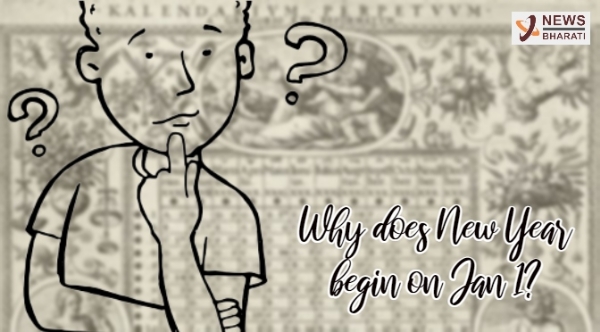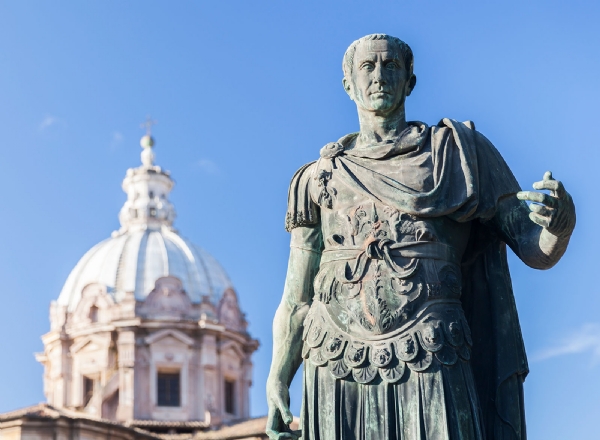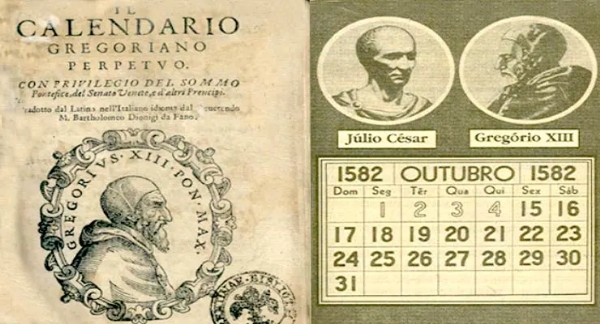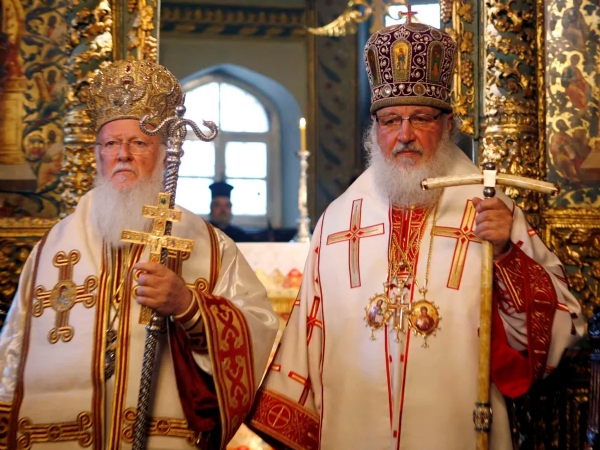The unreasonable tale of 'January 1' and 'New Year'
22 Apr 2022 17:48:49
January 1, is the beginning of a new year. In this western way of measuring time, the day begins at midnight and hence the New Year's greetings are given at midnight. The New Year is celebrated with fireworks all over the world. But why does the new-year start on January 1st? Who decided this? Why and when? To know more, do read this story of a calendar.

The story of the Western calendar begins in Rome. The Roman calendar had 10 months. The year began during spring that is in the month of March and finished before winter - in December. Interestingly, since most of the work was stalled during the cold season, they did not find it necessary to name the months of winter.
Some months of this calendar were named after Greek and Roman gods and goddesses; March (after Mars), April (after Aphrodite / Venus), May (after Maia), June (after Juno, Jupiter's wife). While other months were named by their position in the sequence - Quintilis (fifth), Sextilis (sixth), September (seventh), October (eighth), November (ninth) and December (tenth).
WATCH: INTERVIEW : Indigenity and National Calendar of India
The Roman emperor Numa revised the calendar in the 7th century BCE, adding two new months, January and February. However, instead of adding them as the eleventh and the twelfth month at the end of the year, these two months were placed in the beginning of the year. So September, which was previously the seventh month and the name completely made sense until then, became the ninth month making it completely unreasonable. Similarly, October the eighth month then became the tenth, November the ninth month then became the eleventh, and December the tenth month then became the twelfth. But now, thankfully there were no more anonymous days in the calendar. Each day had been named.
To these 355 days of the year, an extra month was added every two or three years. A Pontifex (a member in the Council of Priests in Ancient Rome) decided when to add the extra month. According to the king's wish, he would sometimes add more or less months. As a result, the Roman calendar went astray.

The Roman emperor Julius Caesar arrived in Egypt sometime around 48 BCE. When he came here, he fell in love! Not with Cleopatra, but with Egypt's accurate solar calendar. He took the Egyptian Mathematician Sosigenes with him to Rome. He then made amendments to the Roman calendar. This new "Julian calendar" had 12 months of 28 to 31 days each and 365 days in a year. An extra day was to be added every four years.
Shortly after this ‘calendar reform’, Julius Caesar was killed. And once again the calendar went astray. A leap day was added every three years, instead of once every four years. It was noticed during the reign of Emperor Augustus that 12 extra days had been added instead of 9. On the same, Augustus declared that he would not take a single leap year in the next 12 years. This brought the Calendar back on the track. Emperor Augustus immediately changed the names of the fifth and sixth months - Quintilis and Sextilis to July and August after the emperors Julius and Augustus respectively!
The Julian calendar had been in use for 1500 years. But it had a minute error due to which it started running ahead of the seasons. In the 16th century, Pope Gregory revised the Julian calendar. He reduced three leap years out of every 400 years. By now 10 extra days which were added erroneously had to be removed. This bridged the gap between the seasons and the calendar. As a result, in the year 1582, the day after 4th October was directly the 15th of October.

Different countries adopted the Gregorian calendar at different times. Catholic Christian countries, such as Italy, Spain, and France, immediately adopted the new calendar. Other Protestant and Orthodox Christian nations did not accept the Gregorian calendar. Some Orthodox Churches began to use the Julian calendar with different modifications than the Gregorian ones. In some Orthodox Churches - Greek, Russian, Serbian, Georgian, etc., the old Julian calendar is still in use. These Churches celebrate the New Year few days later.
The Gregorian year like the ancient Roman year began on the 1st of January. But during the middle ages, countries in Europe started the year on different days. In Rome, the year began on January 1, whereas, at other places people continued to celebrate new-year on March 1, just like previous times. Elsewhere the year started on December 25 (Nativity), the birthday of Jesus. Some places celebrated new-year on Jesus's resurrection day. Still others celebrated new-year on March 25, the day Mother Mary conceived (Annunciation). While Russia's new-year began in September, and elsewhere new-year started in October.
Also read: Indian National Calendar: Nehru deserves the credit?
In Anglo-Saxon England, the year began on December 25, the shortest day of the year. After the 11th century, the year in England began on March 25. So the day after "March 24, 1720" was "March 25, 1721"! During this period, wherever the British ruled, the New Year began on March 25. In the British colonies spread across the United States, India and elsewhere, the year was thus mentioned in the documents of that period.
At last, in the year 1752, Protestant England adopted the Catholic Gregorian calendar. Since then, the New Year in England began on January 1. In the same year, 11 days of September had to be removed. With this move the British calendar became up-to-date.

In Russia, the Orthodox Church continued to use the Julian calendar. Now that calendar is 13 days ahead of the Gregorian calendar. According to this, the Russians celebrate Christmas on January 7 and New Year on January 14. Traditionally, the Russian New Year was celebrated on September 1. It was in 1700, that the New Year was shifted to January 1. The Gregorian calendar was introduced there in 1918 after the Russian Revolution.
The Rumi or Roman Julian calendar was used in Turkey, but only for financial purposes. For religious purposes the Hijri calendar was used. This Rumi calendar began in March. In 1918, Turkey adopted the Gregorian calendar and the beginning of the year was January 1.
January 1, was adopted as the first day of the year at different times around the world. This day has no biblical significance. This day has no significance in the life of Jesus. This day has no significance in any ancient cultures. This day is also not associated with any solar event (smallest day, longest day, equinox etc.). The sun does not transit to any zodiac sign on this day. Nor does this day have any significance in the seasonal changes. Basically January 1st has no Biblical, Astronomical, Seasonal, Solar or Cultural significance. Every country agreed to 1st January as the start of the new-year only because there was no other option.